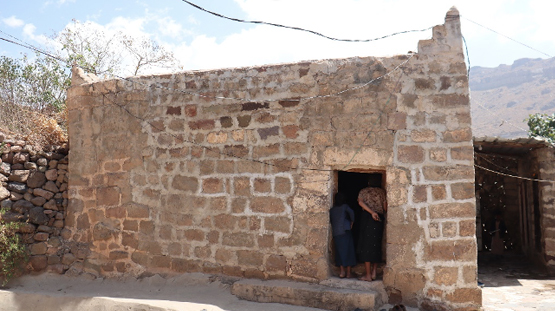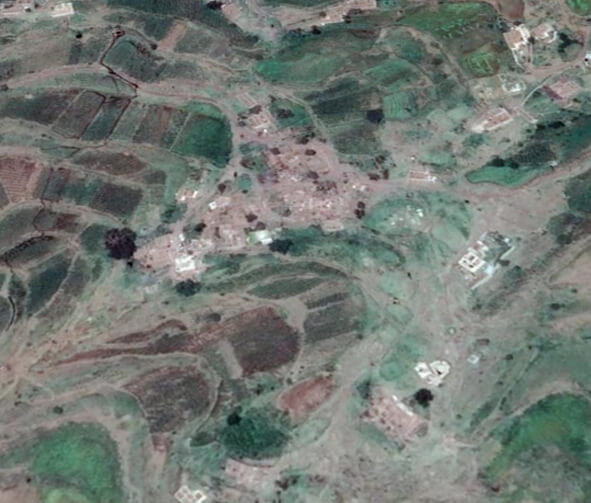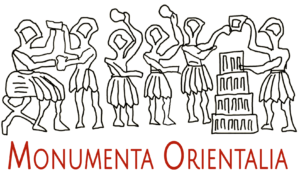
Al-Masjid al-Qadīm – Bayt al-Ghawbar – Al-Ḥaymah
المسجد القديم- بيت غوبر- الحيم ة
Monument description
The date of the village is not mentioned in any historical records, but from the materials on site, it appears that the village early settlements date at least from the Sabaean period. Some inscriptions were reused in one of the Mosque’s walls. The Mosque itself has no clear date of construction.

Architectural and cultural value
Construction style and built date: The Mosque is classified as a cubic Mosque, similar to the Tamur Mosque in Yarim (5th century AH), the Tethed Mosque (Finster 1982: 36, 41), the Arraf Mosque in Jiblah (5th century AH), and the Asnaf Mosque in Khawlan (6th century AH). The date of construction of the Mosque is unknown, because it lacks of any kind of writings, especially because of the obliteration on the ceiling wooden panels due to the coating with varnish.
Components of the Mosque: The Mosque consists of a Prayer Hall, in addition to toilets, a pond and a room. The monument area is 190 m2.
- Justifications for intervention:
- 1. The building has been neglected for lack of funding
- 2. Preserving the monument and preventing further damage
- 3. Restoration of damages to the Mosque resulting from the air strikes to the northern part of the Old City of Sana’a.
- Monument conditions and treatments:
- 1. The Mosque is in a very poor state of preservation, especially on its western façade, where cracks above the entrance and a curvature of the facade inward are visible. Also, a curvature of its northwest corner is present, as well as the fragmentation of the courses of the wall1. The Mosque is in a very poor state of preservation, especially on its western façade, where cracks above the entrance and a curvature of the facade inward are visible. Also, a curvature of its northwest corner is present, as well as the fragmentation of the courses of the wall
2. High humidity in the northern and eastern façades, require a process of insulation by digging around the foundations, and by removing the wall surrounding the Mosque, that, due to the presence of muddy areas, it is the origin of the moisture, especially behind the northern façade. - Treatments: An urgent intervention is needed to preserve and stabilize the Mosque. The proposed treatments are as follows:o Removing and restoring the roof, after performing a casting process and injection to the façades to fill the voids, and strengthening at least the southern façadeo Removing and rebuilding the damaged parts of the Mosque by using materials identical to the old materialso Digging around the foundations and insulating them; removing the wall surrounding the Mosque that, due to the presence of muddy areas, it is the origin of the moisture, especially behind the northern façade.

Countries





